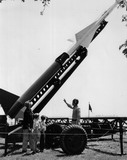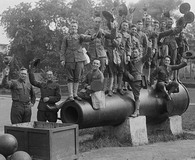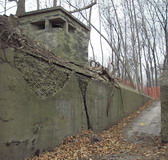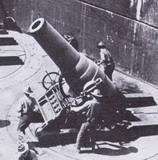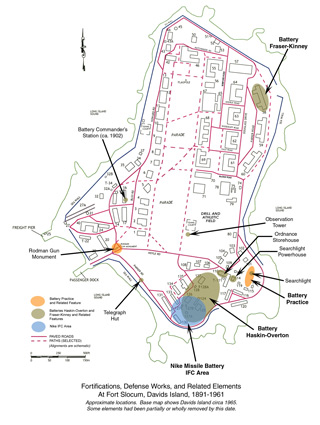| Guardian of the Metropolis |
|
Since Colonial times, New York has been one of America’s most prosperous port cities. At times of crisis it has seemed a ripe military target. Between 1891 and 1906 and again from 1954 to 1961, Davids Island hosted defenses that helped to guard the city.
Coastal Defense Fortifications Fort Slocum’s late 19th-century fortifications were part of the Army’s ring of coastal artillery batteries encircling New York City. These batteries defended against attack by an enemy navy. Until the 1890s there were no heavy artillery emplacements on Davids Island. The post had only a few field artillery pieces for training and ceremony. Field artillery was light, maneuverable weaponry designed to be shifted from place to place as a battle unfolded. It was generally used against masses of troops and temporary fortifications.
The artillery emplacements built at Fort Slocum between 1891 and 1904 were something else entirely. These emplacements had large, heavy weapons to use against ships. Once installed, these artillery pieces could not be moved easily from their carefully prepared positions. In the mid-20th century the Army again built defenses at Fort Slocum. The new facility was a Nike Ajax antiaircraft missile battery, which jointly occupied parts of Davids Island and neighboring Hart Island. Both times the Army built defenses at Fort Slocum, they quickly became outmoded. Rapid advances in weaponry and changes in defensive strategies left them out of date or unnecessary, and the Army withdrew them from active service just a few years after completing them. {mosmap kml[0]='/images/nike2.kml'|zoom='1'|kml[1]='http://davidsisland.westchesterarchives.com/images/endicott2.kml'||kmlrenderer='geoxml'|kmlsidebar='left'|kmlsbwidth='220'|showScale='1'|mapType='Terrain'|kmlsbsort='desc'}
The above map was created with Google Earth.
Being down on that one corner of the island and the nature of our mission, we didn’t mingle too much with the folks at the rest of the island. We always considered ourselves to be different from the schools and things that were going on at the rest of the island. We were a kind of combat-ready outfit, just by the nature of the missile battery. And it might have been a little bit of pride, too. You know, we might have thought of ourselves as a little more than just information school students or that sort of thing.”
(interviewed 2007) |




